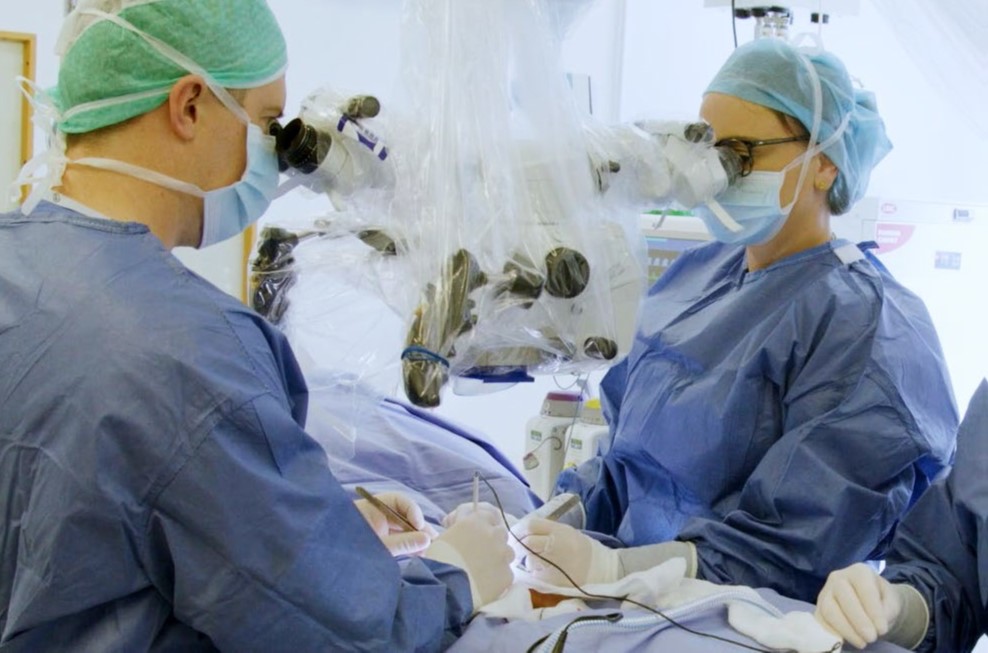Sarah Norton, an Andrology Fellow, has completed her urology training in Ireland through the surgical training scheme. She is currently on a year abroad at St James’ Hospital in Leeds to specialise in andrology, which focuses on male sexual function. This includes being in andrology surgeries like varicoceles and penile implants, as well as cancer-related surgeries such as penile cancer and reconstructive procedures.
Sarah works alongside Patrick Gordon in a training post, learning various operations. She explains,
“I’m learning from him how to perform these operations. With this particular procedure, I’m learning the approach, the incision technique, and how to locate and identify the spermatic cord along with all its structures.”
During the surgery, Sarah uses an Intraoperative Surgical Doppler probe to identify the arterial flow in the testicular artery, ensuring its preservation. She describes the process:
“So, we’re first trying to identify the important structures to preserve: first the vas deferens, then the testicular artery, and finally the veins that we’re going to remove.”
The main goal is to remove or tie off the dilated veins causing the varicocele, which can lead to pain, discomfort, and potential fertility issues due to increased testicular temperature. Sarah notes,
“It’s essentially the pampiniform plexus, which is a venous structure similar to a varicose vein in your leg but located within the scrotum.”
The surgery is intricate, involving tiny structures that require a microscope for better visualisation. Sarah emphasises the importance of the surgical Doppler probe:
“If we didn’t have this Doppler probe, it would be much trickier and very difficult to identify which vessel is the artery that we need to preserve, because ultimately, if we injure the artery, we injure the testicle.”
She adds,
“The dilated veins look like arteries. So essentially, we don’t exactly know which vessel is the artery when we’re looking at the spermatic cord. If we use the Doppler to help us with the waveform, thenwe can be certain that the vessel is the artery.”
Sarah feels relieved and confident that the technology aids in performing the correct procedures, ultimately benefiting patients. She shares,
“I suppose it’s really aiding our surgery by ensuring that we’re performing the correct procedure and ultimately helping and benefiting our patients.”
Sarah acknowledges the evolving field of urology, integrating technology and “gadgets” into operations, which she sees as a crucial part of the future. Sarah’s sub-specialty interest in andrology is not standardly available in public hospitals in Ireland, highlighting the importance of her training abroad. Her experience and the use of advanced technology in surgeries underscore the significance of precise and careful surgical practices in improving patient outcomes.
Download the full PDF
